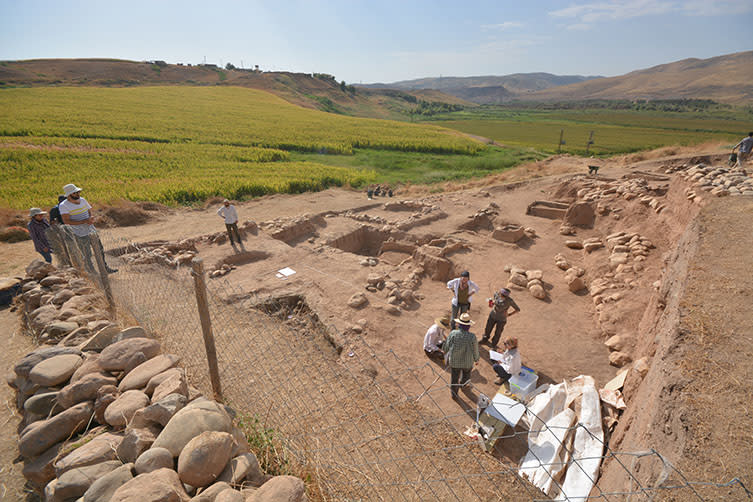Bronze Age burial site in Turkey reveals grim evidence of child human sacrifices

A Bronze Age burial site in Turkey shows evidence of human sacrifice – with children as young as 11 slaughtered to please the gods.
The remains date from between 3100 and 2800 BCE, and were found at Başur Höyük, a Bronze Age cemetery in Turkey.
The remains of at least 11 people, both male and female, ranging from age 11 to young adults, have been uncovered in an excavation of three graves.
Several appear to have been sacrificed – with researchers saying that complex civilisations used the grisly rituals to consolidate their power.

An excavation of Başur Höyük uncovered a large, coffin-like stone tomb that contained multiple burials, with an unprecedented number of high-status grave goods for the period and region.
In three graves were found the remains of at least 11 people, male and female, ranging from age 11 to young adults.
Several people were buried outside the tomb with elaborate ornaments and grave goods.
MOST POPULAR TODAY ON YAHOO
Manhunt launched for suspected killer after body found in barrel in Australia
Police in Germany arrest man, 56, on suspicion of killing 21 co-workers by poisoning their food
Tony Blair warns that future comparisons to Nazi Germany may not be far fetched
Lost cat is found 60 miles from home and reunited with owners 10 YEARS after he went missing
Dr Brenna Hassett of the Natural History Museum says, ‘The burials are remarkable because of the youth of the individuals, the number that were buried and the large wealth of objects that were buried with them.
‘Women and children in Mesopotamia were occasionally buried with grave goods, but they were normally personal belongings.
‘There are various pieces of evidence which suggest that these young people did not die accidentally or naturally – rather they were sacrificed.’
Brenna says, ‘Previously, the most well-known example of human sacrifice from this area is the monumental discovery of the Royal Cemetery of Ur, where hundreds of burials were identified as sacrifices.
‘It has been suggested that practicing human sacrifice was one of the ways that complex civilizations like the one that rose up in Mesopotamia consolidated their power.
‘This discovery moves the investigation 500 years earlier and more than 500 miles to the north.’

 Yahoo News
Yahoo News 

